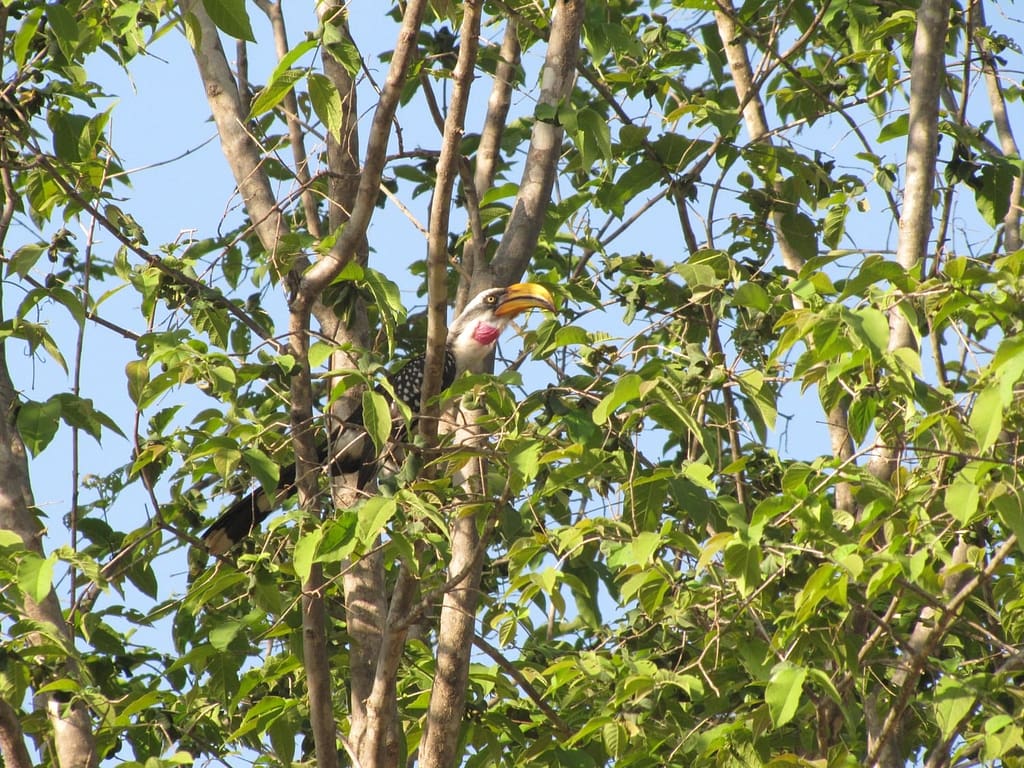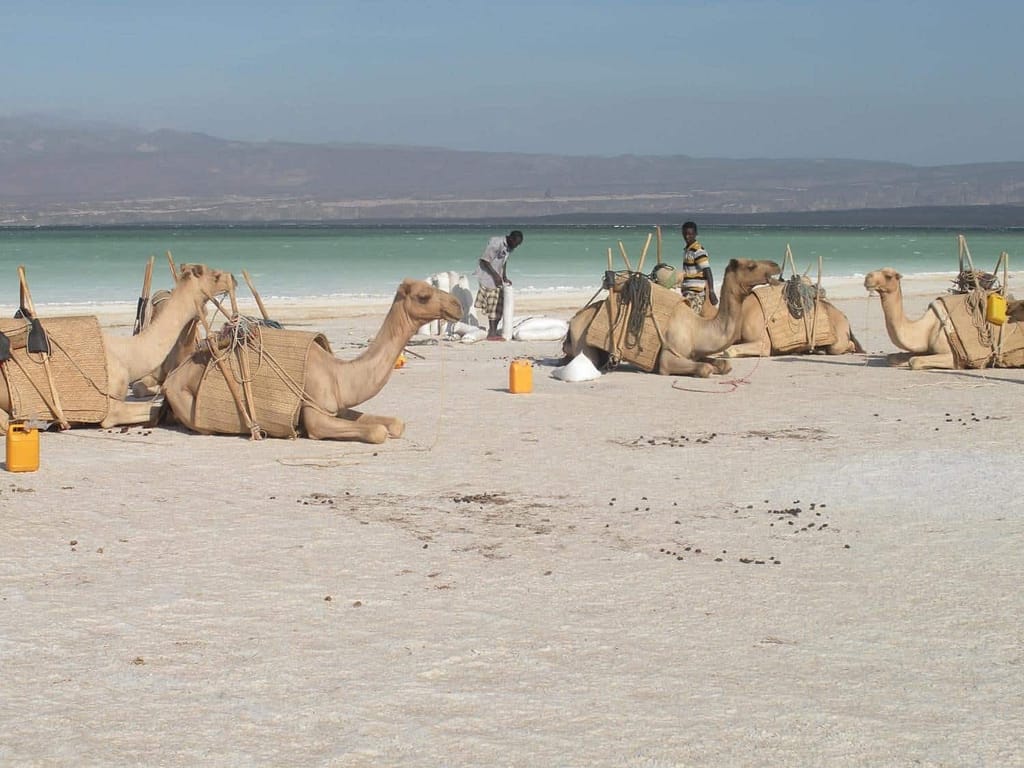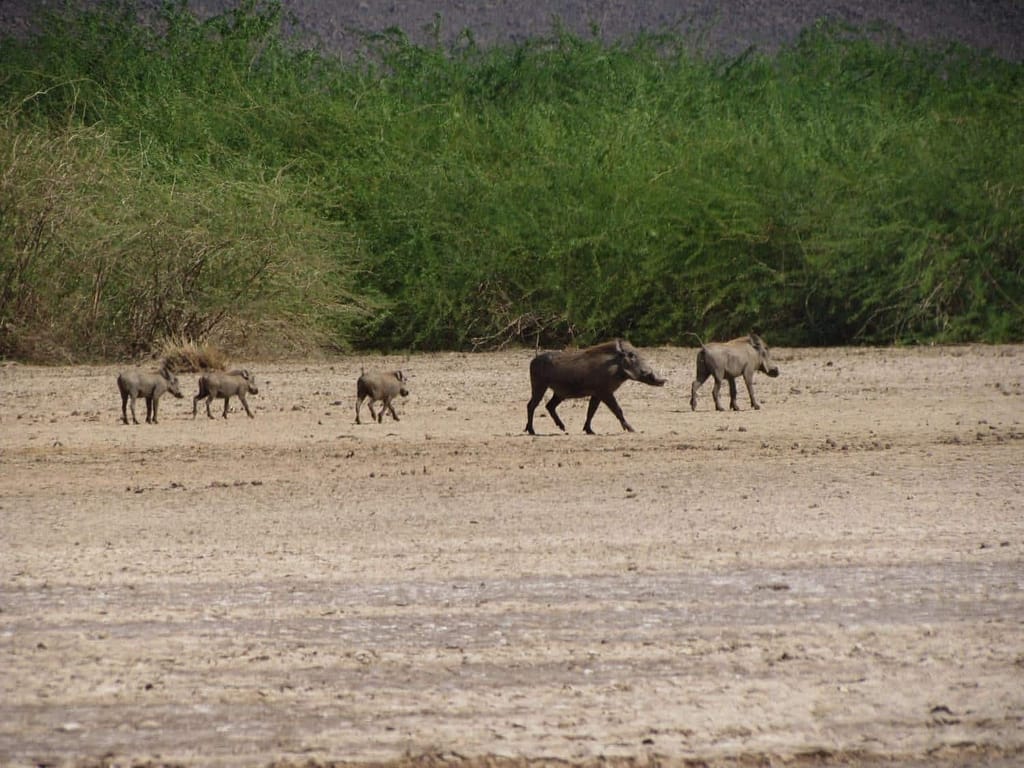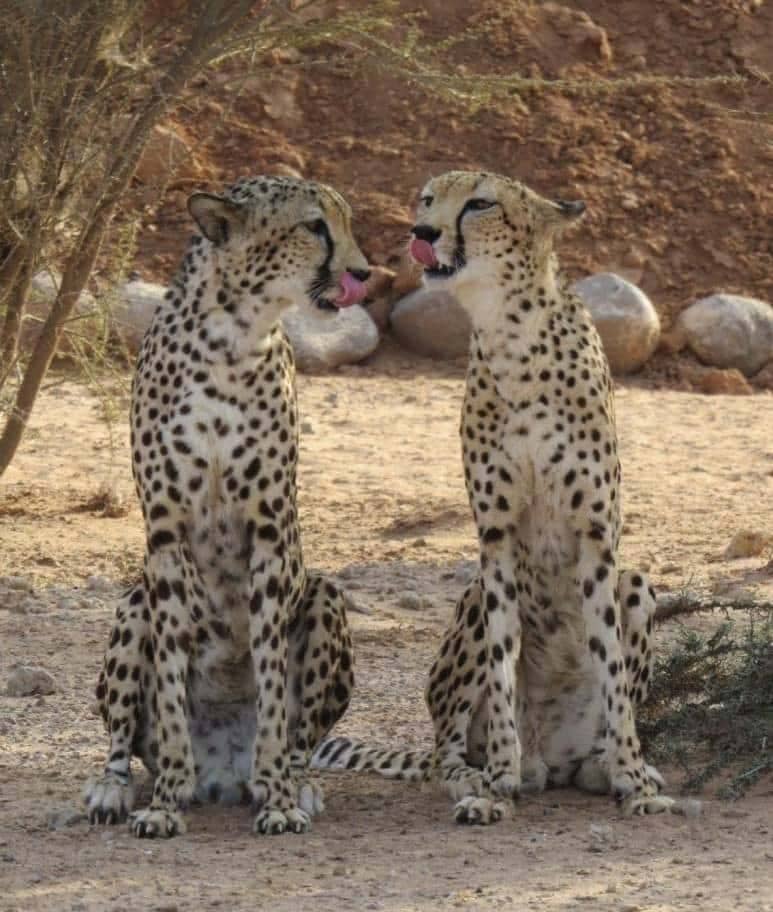Very diverse animals are easily observed, which is a plus when you discover Djibouti!
To present them to you and for the pleasure of the eyes, here are some examples at sea, on land and in the air, which I have illustrated with photos: they were all taken in Djibouti by Josiane and Bernard Lips, university professors , caving and diving enthusiasts, and Djibouti fish specialists. https://leclub-biotope.com/…/1003-poissons-de-djibouti
To find out more about Djibouti's endemic land animal species, read our blog post entitled "6 endemic land animals of Djibouti 6 ENDEMIC LAND ANIMALS OF DJIBOUTI.
Fish of the Republic of Djibouti
Djibouti has 370 kilometers of coastline and several hundred species of fish inhabit its territorial waters. Josiane and Bernard Lips and Jean-Michel Roux, in their book entitled "The Fishes of Djibouti", described and photographed 520 species of fish. Whether you're a scuba diver or a snorkeler (fins, mask, snorkel), you don't know where to look!
The Famous Seasonal: The Whale Shark
Honor where honor is due, the imposing whale shark comes to take up winter quarters between November and February, in the waters of the Gulf of Tadjourah. This fish, measuring between 4 and 10 meters long on average, finds plankton, krill and small fish there, on which it feeds at the rate of a ton a day!
Totally harmless to humans, and moving slowly sometimes near the surface, it is easy to evolve with it, for this mask and snorkel are sufficient. To find out, remember to book during the season, which runs from mid-November to the end of January! We offer several circuits including its discovery: the Beaches and Camps circuit, for example!

Still poorly known, the whale shark is a threatened species due in part to the fishing it is subjected to in some parts of the world, and to trauma caused by engine propellers. Boats and swimmers must keep their distance to avoid injuring or disturbing it.
Wealth of marine fauna between corals, clownfish, turtles and dolphins...
Islands like the Archipelago of the 7 Brothers are home to fearsome predators: Great Barracuda, Carangue, Red Carp, sharks and other Meru...


Also, stingrays, moray eels and turtles are easily observed from the surface.


The variety of colours of the marine fauna and the numerous corals is a source of wonder. Species participating in the show include: lionfish, blue-green chromis, barber wrasse, parrot fish, surgeon fish, clown fish, and other schools of fusiliers. Let's finish to make the connection with the birds, with swordfish and dolphins, which can be seen emerging from time to time above the waves.





Birds of Djibouti
Bird lovers will not be disappointed... The lucky ones will try to spot the famous Djibouti Francolin, an endemic species of the country in danger of extinction, in the Goda or Mabla mountains, represented since 2013 on the 250 FD coins. To learn more about this endemic bird, see the blog article dedicated to endemic terrestrial species of Djibouti 6 ENDEMIC LAND ANIMALS OF DJIBOUTI

Djibouti is a country of small surface area where various biotopes are concentrated: beaches, mangrove swamps, lakes, mountains, deserts?
Lac Abbé allows you to observe many animals, including birds with its pink flamingos, wading birds, geese and ibises.




Djibouti also makes it possible to observe several species of birds of prey, in particular vultures in the desert zone of Grand Bara, and the Neophron in Tadjourah.


The semi-desert areas also make it possible to observe the colorful Persian Bee-eater:

The coolness and greenery of the Goda Mountains are home to species such as Hornbills and Yellow-billed Hornbills.


Djibouti's terrestrial fauna
Less numerous and less colourful than those of the ocean, Djibouti's land animals are also noteworthy.


Domesticated, the majestic dromedary is nonetheless respected. It is at home, on the track, but also often on or beside roads...

At the other end of the size scale, despite its cousin the elephant, the daman enchants young and old alike. It is a herbivore the size of a rabbit whose tawny brown coat makes it difficult to spot on the rocks where it likes to bask in the sun.

Other small animals such as burrowing squirrels and foxes can be found in the rocks.


Antelopes and gazelles are quite common in Djibouti. You can't miss the dik dik, a 40 cm dwarf antelope with a grey coat, endemic to the countries of the Horn of Africa. Their name comes from the noise they make when they are in danger.



Among the animals that we frequently meet in Djibouti, let's not forget the baboons, sometimes aggressive. The green monkeys, pilferers of all that is eaten, visit us in the camps of the Goda Mountains!


Goats and goats' kids are omnipresent in Djibouti, in the city or in the bush. It is not uncommon to see a specimen perched on the top of a small acacia tree...


In search of wild animals
Much more rarely, it is possible to see a hyena at dawn, which will flee if you try to approach it within 300 meters. Do not try to catch it, it can run at 60 km / hr ...
Animal lovers will enjoy visiting the Decan refuge! Among other species, there are the famous cheetahs collected by the veterinarian who created this refuge! But it is the leopard that is present in the wild in Djibouti.
A visit to the refuge also provides a good overview of the local flora!


Africorne proposes the visit of Refuge Decan, in particular in the following itinerary: Landscapes and Sensations.
To follow up on your comments and current events, a small update is needed to talk about a species that was thought to be extinct, and rediscovered in 2020: the elephant shrew, a kind of mouse with a snout elongated allowing it to suck up the insects it feeds on!
For more complete information on the shrew – Somali elephant, see the blog article dedicated to the endemic species of Djibouti 6 ENDEMIC LAND ANIMALS OF DJIBOUTI

Naturally, the list of animals in Djibouti made in this short article is not exhaustive, you will find more examples on the site Djibouti Nature.
However, photographs do not replace life-size observation...
So I am waiting for you to make you discover the fauna and flora of the Republic of Djibouti!


15 responses
hello
In your article, unless I'm mistaken, you don't talk about the elephant shrew, but it's an animal back in Djibouti....
Hello, Annick.
And congratulations for your responsiveness! Because this species was thought to be extinct since 1973, and it is only since August of this year that 12 specimens of elephant shrew have been spotted in Djibouti. It is a small mammal the size of a mouse whose elongated snout allows it to suck insects it feeds on.
He would have a common kinship with the elephant...
Excellent article, thank you! Just two precisions, the lizard is not a cameleon but an agame and it's not a leopard but a guepard on the other picture... OK these are details
Merci beaucoup pour vos remarques pertinentes, les correction sont faites ! 😉 A très bientôt !
Hello,
I find this article interesting, but there is one question I have: on one of the pictures, you can see a goat on top of a tree, but how does it climb? Does it have claws?
Hello Emma
Goats or goats perched on an acacia tree are a surprising but "classic" image in the Republic of Djibouti.
These animals do not have claws, but they are very agile and are able to jump on bushes
The discovery of the mammals of Djibouti is very tempting whether they are in the wild or at the Decan refuge! Is there a circuit dedicated to the terrestrial fauna?
PS: In the paragraph "In search of the wild animals", it is mentioned the "famous leopards", isn't there a confusion with the cheetahs ?
Thank you Dominique for your comment which allows us to rectify an error; it is indeed two "famous cheetahs" (and not leopards) which were collected at the refuge DÉCAN (cf.the photo). But let us specify that it is the leopards which are still present in the wild in Djibouti.
There is not yet a tour dedicated to terrestrial wildlife, but we can design one for you dear Dominique!
A beautiful destination, So there is something for everyone....!!!
Yes Gilles, in Djibouti there is indeed something for everyone: deserts, volcanoes, mangroves, beaches, forests, mountains and wonderful underwater world!
Bonjour! Je suis particulièrement intéressé de savoir si Djibouti n’abrite que le Phacochère commun (Phacochoerus africanus) et non le Phacochère du désert (Phacochoerus aethiopicus). La présence de ce dernier est signalée au Somaliland, très proche de la frontière avec Djibouti. Comme il n’y a pas de barrière écologique empêchant le passage, je cherche toute information sur l’identité des phacos au sud-est de Djibouti le long de cette frontière. Un guide de détermination desdeux espèces figure ici: Merci d’avance! https://www.iucn-wpsg.org/_files/ugd/119740_938c7417e92b44a2a6c2a09f22f980ca.pdf J.P. d’Huart
Bonjour Jean-Pierre
Je consulte des spécialistes des animaux à Djibouti avant de vous répondre
Alain
Bonjour Jean-Pierre,
Désolé pour le caractère tardif de ma réponse; les experts animaliers de Djibouti ne connaissent que le phacochère commun présent non loin du lac Abbé frontalier de l’Ethiopie; j’ai moi-même pu observer ces phacochères à maintes reprises.
Bien cordialement
Alain
Hello
Une petite suite à cet échange sur les phacochères de Djibouti. Sans certitude faute d’examen de carcasses et/ou analyse génétique, il me semble que les phacochères de Djibouti – dont les populations locales fluctuent (Abhé, Goda, plaines intérieures type Andabba) – sont possiblement des phacochères communs sous-espèce « aeliani », soit le Phacochère d’Érythrée. Sous réserve.
Quelques photos figurent ici : https://www.flickr.com/photos/nature_alain_laurent/albums/72177720315206718/
Pas eu la possibilité d’aller plus loin.
Sincerely
Alain (aussi)
Bonjour Alain
A ma connaissance seuls les phacochères communs peuvent être observés à Djibouti
Bien cordialement -Alain